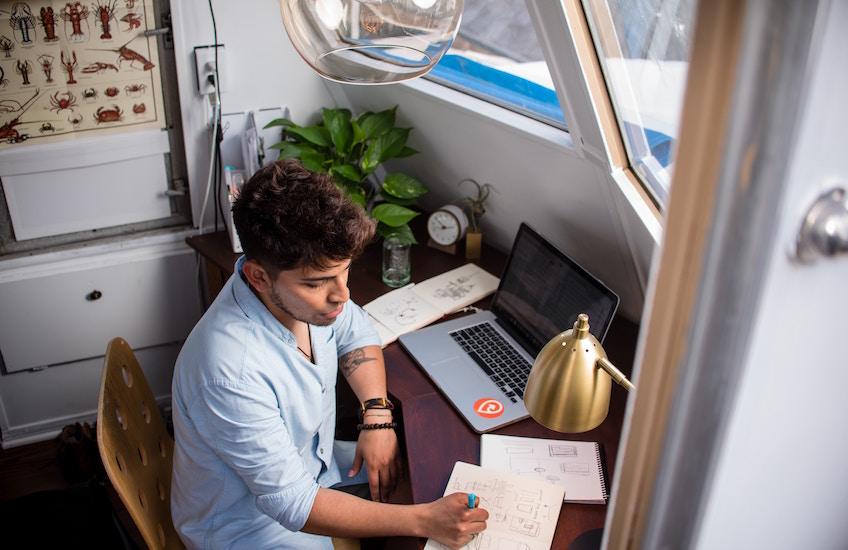How to Make Your Home Office a More Creative Space
Published: Nov 04, 2019

If you work in a creative profession or perform creative work of any kind, you’ve likely faced inspiration shortages. The bad news is without a space primed for creativity, the inspiration well can often run dry. The good news is if you’re able to work from home, even part time, there are ways to make your home office a creativity incubator. Here are four tips for building a creativity breeding ground at home.
1. Paint with a cool color palette
Finding the right color scheme for your creativity incubator seems like a small decision, but it can have a big impact on your output. Bold, bright colors can often distract you, even overwhelm you. Whereas cooler colors like white, blue, and green can calm you. So, they’ll likely be the way to go in your home office space.
A good option is to use a stark white space from floor to ceiling. This is ideal for achieving a blank canvas aesthetic. Others might like using cool, refreshing blue all over their walls.
2. Bring the outside in
Using natural, outdoor elements in your indoor space is well known to boost productivity. Plant life—or even the mere appearance of plant life, for those who prefer artificial alternatives—conjures life, growth, and evolution, making us more creatively productive.
Dainty succulents, potted bamboo, and wall-smothering ivy can inject some lush plant life into your creative workspace. These additions counteract the sterile, creativity-sapping cubicle look, which has no place in a home and will hurt your creativity.
3. Wage war on clutter
The adage “tidy desk, tidy mind” is applicable to any office space and is especially relevant to creative spaces where uninhibited, distraction-free focus is crucial. Visual clutter breeds mental clutter, and so has no place in a home office—whether that be a design studio, writing study, or brainstorming room.
To keep clutter out of sight and therefore out of mind, invest in concealed storage solutions—spacious ottomans, floating shelves with hidden compartments, desks with plenty of drawer space, and bookcases fronted by opaque panels. These will provide all the storage space you need for essentials like stationery, reading materials, and tech, leaving must-haves invisible when not in use.
4. Embrace sensory triggers
Last but not least, don’t forget the power of sensory stimulants. To many people, inspiration comes with the right workday soundtrack. And in creative roles, music can be key to getting the job done. The key to this step is to write your own rulebook and identify your own sensory triggers before setting the scene.
Maybe you work most creatively when listening to ambient or classical music without any lyrics. Maybe your biggest and best ideas can only be unleashed by your favorite high-energy high-tempo playlist. Or maybe you work best in complete silence. Determine what works best for you and then choose your music (or turn off your music) accordingly.
Suhayl Laher works at Tiles Direct, one of the UK’s largest independent tile distributors and retailers - bringing design inspiration to homeowners, architects and developers.
